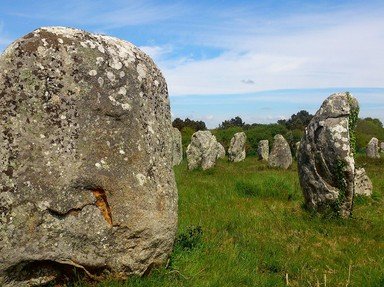Quiz Answer Key and Fun Facts
1. In what parts of the world have Neanderthal fossils been found?
2. What is the typical description of Neanderthals that correlates with their choice of housing?
3. Scientists cannot agree on how to classify the fossils belong to Neanderthals. Some say that the proper classification would be "Homo neanderthalensis", while other believe another word should be inserted between the other two. What is the word?
4. During which age of cultural development did Neanderthals live?
5. How did the size of a Neanderthals' brain compare to a modern human?
6. What word describes the climate of the lands inhabited by Neanderthals?
7. Paleoanthropologists believe that Neanderthals were quite a bit stronger than the Homo sapiens sapiens of today.
8. When they were not hunting or gathering, it appears that Neanderthals used their spare time to do what activities?
9. After studying archaeological evidence, paleoanthropologists have determined that it appears that Neanderthals were the first to:
10. Paleoanthropologists agree that Neanderthals became extinct when they intermarried with "Homo sapiens sapiens".
Source: Author
ponycargirl
This quiz was reviewed by FunTrivia editor
bloomsby before going online.
Any errors found in FunTrivia content are routinely corrected through our feedback system.

